Choosing the right roofing materials for your San Antonio, TX home impacts comfort, safety, and long-term costs. At Shield Roofing, with over 25 years of experience, we guide customers in making informed decisions. Whether you prefer clay tile or asphalt shingle, it’s crucial to understand life-cycle costs, energy efficiency, and maintenance needs. This guide compares these popular roofing options to help you choose the best fit for your home and budget.
Overview of Clay Tile and Asphalt Shingle Roofing
In the world of residential roofing, clay tiles and asphalt shingles are among the most trusted roofing materials. Clay tiles stand out for their classic appearance and robust durability, while asphalt shingles are celebrated for their affordability and widespread availability. Each type of roof brings unique benefits and considerations regarding installation, replacement, and life-cycle cost.
Environmental conditions in Texas, especially heat and severe weather, can influence the performance and longevity of both roofing materials. Next, let’s examine their common uses and material differences.
Common Uses and Popularity in U.S. Homes
Clay tiles and asphalt shingles offer distinct benefits for homeowners. Clay tiles are known for their durability and aesthetic appeal, making them ideal in warmer climates and coastal areas due to their heat and humidity resistance. Their variety of colors and styles enhances curb appeal and longevity.
In contrast, asphalt shingles are popular across the U.S. for their lower costs and minimal maintenance. Commonly found in suburban neighborhoods, they accommodate various architectural styles. Their availability in different materials further caters to diverse preferences. Ultimately, both roofing types balance cost, aesthetics, and durability effectively.
Basic Material Differences Explained
In residential roofing, clay tiles and asphalt shingles differ in composition. Clay tiles, made from natural materials, offer aesthetic appeal and durability, lasting over 50 years with proper care. However, their weight requires strong structural support, limiting their use in some buildings.
In contrast, asphalt shingles are lighter, made from a fiberglass or organic base saturated with asphalt, making installation easier. They typically last 20 to 30 years and have a lower upfront cost, appealing to budget-conscious homeowners. These material differences affect installation costs, energy efficiency, and maintenance needs.
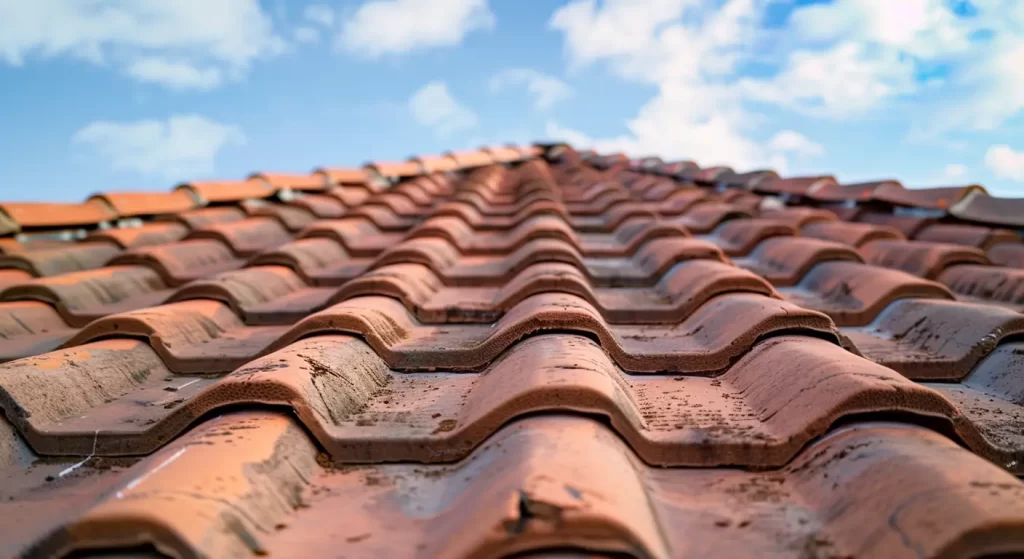
Initial Installation Costs: Clay Tile vs. Asphalt Shingle
When planning a roof replacement or new install, homeowners often compare installation costs first. Clay tile roofs demand higher upfront costs due to expensive materials and more complex labor. Asphalt shingle roofs, in contrast, are one of the most budget-friendly roofing materials available.
The significant price gap between the two reflects not only the different materials but also the installation process and labor involved. To understand the real cost difference, let’s break down the costs and examine installation complexity.
Material and Labor Costs Breakdown
Cost factors for roofing include material type and installation labor. Clay tiles, a premium option, have higher upfront costs due to their weight and need for strong support, requiring specialized labor. Conversely, asphalt shingles are more economical with lower material costs and simpler installation, resulting in reduced labor expenses. Understanding these costs is essential for homeowners making informed roofing decisions.
Installation Complexity and Timeline
The installation of a new roof varies based on the chosen materials. Asphalt shingles are favored for their quick, efficient installation—most projects are completed in a day.
In contrast, clay tile installations:
- Require reinforcing the roof deck for added weight
- Involve meticulous placement and fastening of individual tiles
- Typically take several days to complete
This complexity raises both labor costs and completion time. While clay tile roofs may have higher upfront costs and longer timelines, they result in a durable, visually appealing roof that outlasts cheaper options.
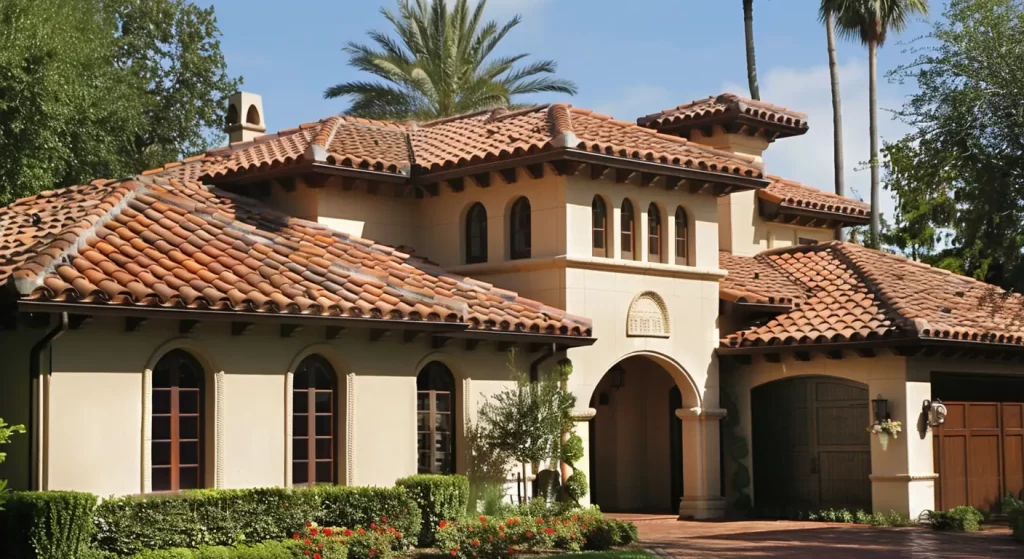
Lifespan and Durability Comparison
The expected lifespan and overall durability are key factors when comparing clay tiles to asphalt shingles. Clay tile roofs boast a much longer lifespan—often 50 to 100 years—thanks to their resistance to weather and decay. In contrast, asphalt shingle roofs generally last between 15 and 30 years, making them a practical choice for shorter-term investment.
Texas weather, with its heat and storms, can affect roof longevity. Understanding life expectancy and what impacts it will help you decide which roof is right for you.
Life Expectancy in Texas and Similar Climates
In Texas and other hot, storm-prone areas, climate impacts roof longevity. Clay tile roofs withstand extreme heat and resist damage from insects, rot, and fire, often lasting over 50 years—up to 100 with proper maintenance.
Asphalt shingles are affordable and easy to install but typically last only 15 to 30 years in Texas. High temperatures, UV exposure, and heavy rain accelerate deterioration compared to milder climates.
Concrete tiles and slate roofs perform well, but clay tiles set the durability standard in harsh conditions. For long-term value, clay tile roofing is the best choice for homeowners.
Factors That Affect Long-Term Performance
Several factors affect the long-term performance and durability of roofing materials. Weather conditions—such as intense sunlight, heavy rain, and high winds—can weaken clay tiles and asphalt shingles, though clay tiles are generally more resilient. Proper maintenance is vital; routine inspections, cleaning, and prompt repairs can extend a roof’s lifespan. Strong structural support is essential for clay tiles due to their weight. At our company, we work with reputable brands like Owens Corning and GAF to ensure that you have the best materials for your roof. Our goal is to provide roofs built tough and built to last!
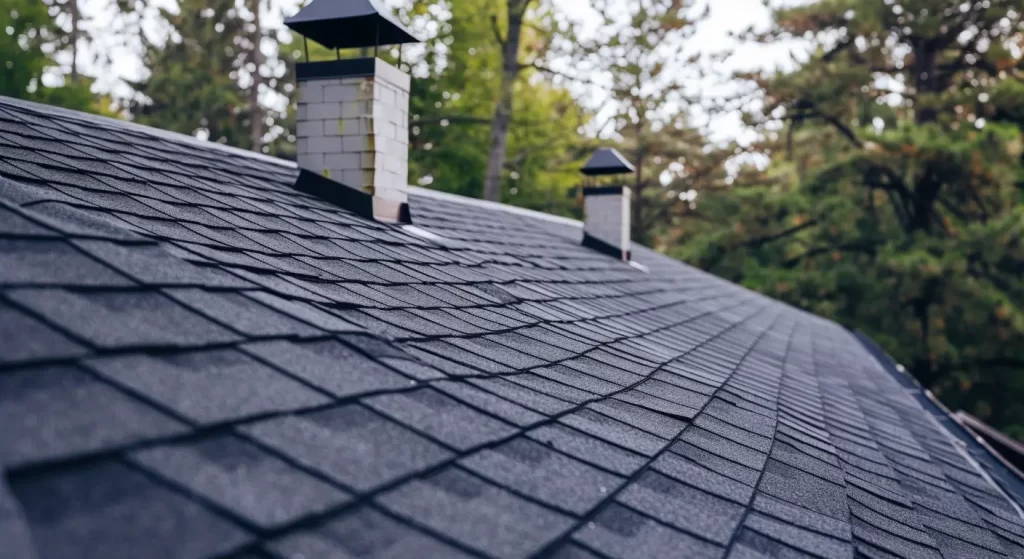
Maintenance Requirements and Ongoing Care
Maintaining your roof is a key part of preserving its appearance and function. Clay tile roofs require less frequent maintenance thanks to their robust design, but individual tiles can break and need replacing. Asphalt shingles, while also easy to maintain, often need more attention due to their shorter lifespan and susceptibility to wind or hail damage.
Understanding the ongoing care and typical maintenance requirements for each type of roofing material will help you plan for the future—and budget for preventive care.
Routine Upkeep for Clay Tile Roofs
Routine maintenance for clay tile roofs is essential for longevity and performance. Regular visual inspections help identify damage or debris that may compromise structural integrity. Cleaning the roof bi-annually removes moss, algae, and dirt, preserving both aesthetics and functionality.
Clay tiles require minimal maintenance compared to other materials, but proper drainage is crucial to avoid water damage and extend roof lifespan. Homeowners should also inspect the underlying roof deck and flashings to prevent leaks. This proactive approach boosts energy efficiency and enhances the home’s value and curb appeal.
Maintenance Needs for Asphalt Shingle Roofs
Asphalt shingle roofs are popular for their low maintenance, making them ideal for homeowners. Regular inspections, ideally once or twice a year, help identify wear or damage, such as curling or missing shingles. Promptly addressing these issues can prevent significant water damage and extend the roof’s lifespan.
Cleaning is crucial to remove debris that traps moisture or promotes algae growth. A gentle wash keeps the shingles looking good and performing well. While asphalt shingles are affordable, proactive maintenance enhances their longevity and efficiency, protecting your investment and providing peace of mind. Timely repairs improve durability against severe weather conditions.
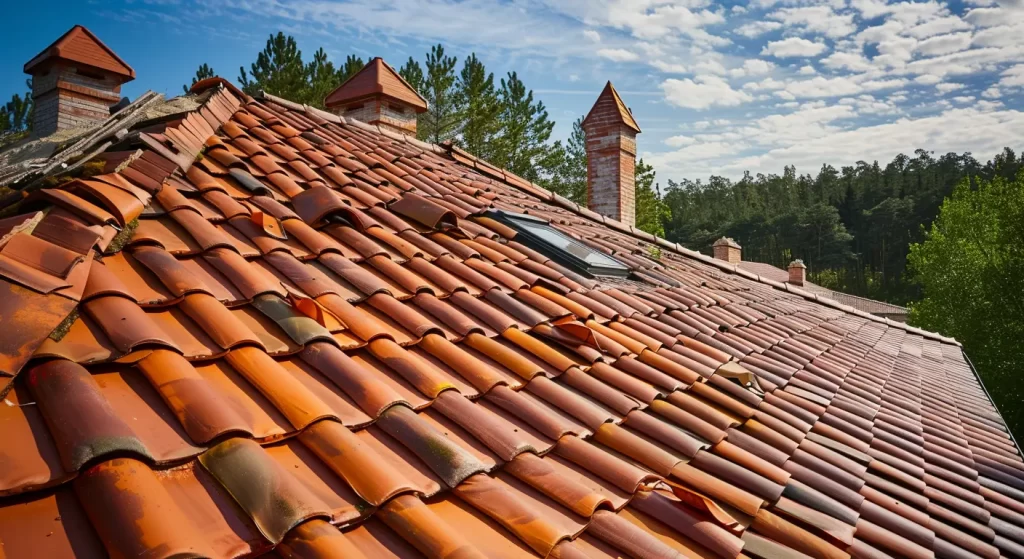
Energy Efficiency and Insulation Properties
Roofing materials play a crucial role in your home’s energy efficiency and comfort. Clay tile roofs naturally reflect sunlight and resist heat absorption, which can help lower energy bills in the Texas climate. Asphalt shingles, while offering some insulation, generally retain more heat, leading to higher cooling costs during long, hot summers.
Understanding the insulation properties and energy efficiency of each roofing type is key for homeowners interested in comfort and long-term savings.
Impact on Home Comfort and Utility Bills
Choosing roofing materials impacts home comfort and utility bills. Clay tiles effectively regulate indoor temperatures, keeping homes cooler in warm climates and reducing energy costs, making them a sustainable choice.
In contrast, asphalt shingles, though aesthetically pleasing, offer less insulation and can lead to higher energy expenses as they absorb more heat. Careful consideration of roofing options can enhance comfort and lower utility costs. Homeowners should weigh these factors for peace of mind and energy savings.
Performance in Hot Texas Weather
Texas weather challenges roofing materials. Clay tiles, designed for heat resistance, thrive in prolonged sunshine and high temperatures, with their curved design promoting airflow and preventing heat buildup.
In contrast, asphalt shingles can degrade quickly under intense sunlight and extreme heat, resulting in fading, warping, or granule loss, which shortens their lifespan and raises energy costs.
For San Antonio, TX homeowners, choosing a roof that withstands high heat while reducing energy bills ensures comfort and long-term savings.
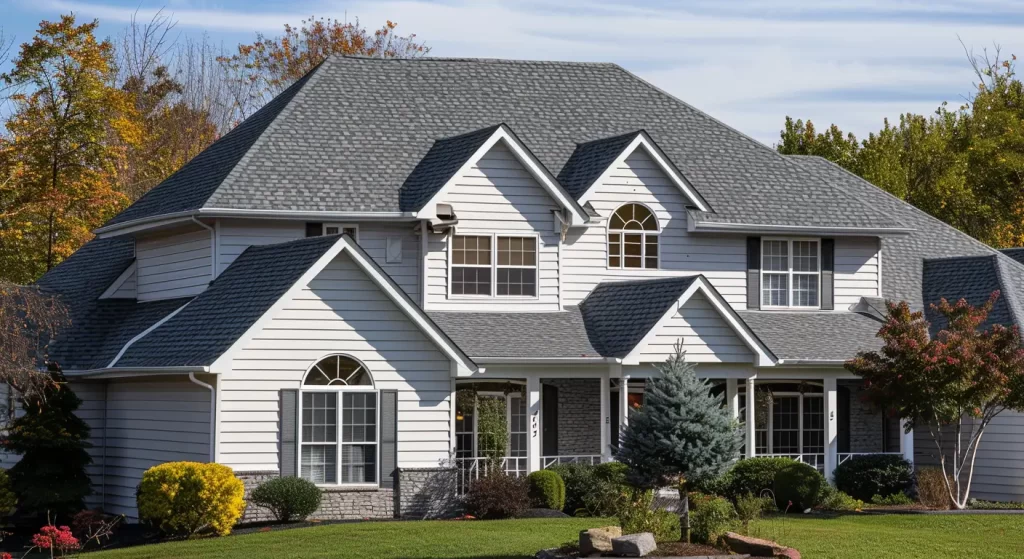
Comparing the Sustainability of Clay Tile and Asphalt Shingles
Evaluating the sustainability of different roofing materials reveals significant disparities. Clay tiles, made from natural materials, demonstrate an impressive longevity and minimal environmental impact throughout their life cycle. Their production elevates energy efficiency, fostering a lower carbon footprint when compared to asphalt shingles. Conversely, asphalt shingles, while popular for their affordability, often rely on petroleum products and have a shorter lifespan, resulting in more frequent roof replacements and increased waste. Understanding these nuances enables homeowners to make an informed decision regarding their roofing options.
Environmental Impact of Clay Tiles
Clay tiles offer a sustainable choice among various roofing materials due to their natural composition and long lifespan. They are made from earth’s abundant resources, contributing to lower environmental impact compared to synthetic options. Additionally, clay roofs provide excellent energy efficiency, reducing reliance on cooling systems in hot climates. Their durability minimizes the frequency of replacements, further conserving materials. Choosing clay tile roofing not only enhances aesthetic appeal but also aligns with eco-friendly building practices, offering homeowners peace of mind regarding their environmental footprint.
Asphalt Shingles and Their Environmental Trade-Offs
The prevalent use of asphalt shingles in residential roofing is often praised for their affordability and versatility. However, the environmental trade-offs associated with these materials merit consideration. Primarily composed of petroleum products, asphalt shingles have a relatively shorter lifespan compared to clay tiles. Their production generates greenhouse gases, contributing to their environmental impact. Additionally, improper disposal of worn-out shingles can lead to landfill accumulation, posing further ecological concerns. Homeowners should weigh these factors against other roofing options to make an informed decision that aligns with sustainability goals.
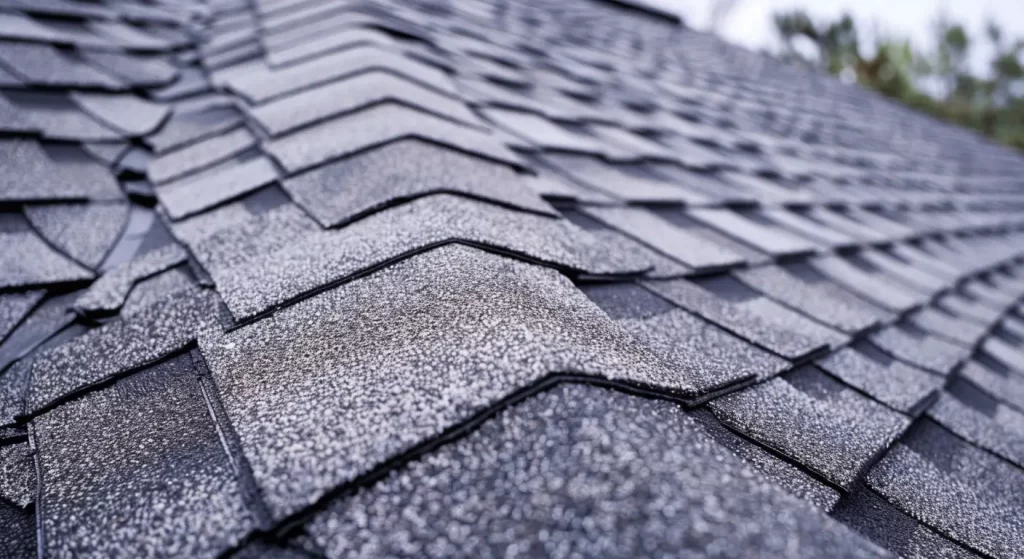
Contact Us
In conclusion, clay tile and asphalt shingle roofing offer unique advantages and challenges that impact life-cycle costs. Clay tiles provide durability and aesthetic appeal, while asphalt shingles are more budget-friendly initially. Evaluating longevity, maintenance, and energy efficiency is crucial for making an informed decision that aligns with your needs and financial goals. As an Owens Corning preferred contractor with GAF certification, a BBB A+ rating, CTRCA membership, and Directorii affiliation, Shield Roofing can guide you in this choice. Contact us for a consultation to find the ideal roofing solution for your San Antonio, TX property. Tough roofs built to last!
Read our blog: How Much Snow Load Can Your Roof Handle?
Frequently Asked Questions
What is a disadvantage of clay tile roofing?
Clay tiles, while long-lasting and visually appealing, have a higher price and require strong structural support due to their weight. They can also break if walked on, requiring careful maintenance and occasional individual tile replacement.
Is a clay tile roof more expensive than shingles?
Yes, clay tiles are more expensive than asphalt shingles in both installation and labor costs. The upfront cost for clay tile roofs is significantly higher due to the price of materials and the complex installation process, but their longevity offsets the investment over time.
